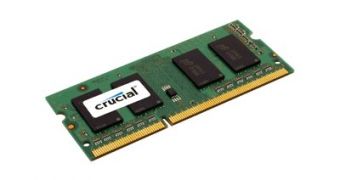The DDR4 memory specification may be the favorite pet project of JEDEC right now, but the standard-setting organization is, naturally, working on other things as well, such as updates to the existing DDR3 standard, one of which has just been completed.
With the diversifications of consumer electronics, and the wide range of possible performance levels, hardware components have to evolve as well.
RAM (random access memory) is one element that appears in almost every device on the IT industry, so it has to be especially varied in shape and prowess.
Thus JEDEC has been working on a new version of the DDR3 standard, the Release 4, which it has now formally released.
The newest DDR3 series presence detect document (SPD) shows the updates specs, which support new memory module types.
For those that don't know, SPDs are present on all JEDEC DRAM modules and contain parameters like storage capacity, voltages and the presence of thermal sensors.
The information lets systems dynamically configure themselves by reading them at initialization time. In other words, SPDs have a key role in the enabling of optimal computer performance.
The new specification includes new versions of UDIMM, RDIMM, CDIMM and LRDIMM modules.
“Application specific memory modules are widening the variety of options for system designers, and the Serial Presence Detect is a reliable and consistent way to document the features of these new modules so that system software can tune system performance,” said Mian Quddus, chairman of JEDEC’s JC-45 Committee for Dynamic Random Access Memory (DRAM) Modules.
“This release of the DDR3 SPD specification adds support for Load Reduction DIMMs used in high end computing platforms and also for 16b-SO-DIMMs and 32b-SO-DIMMs used for embedded applications such as printers.”
Modules that employ the new parameters will make their appearance at some point during the following year (2012).

 14 DAY TRIAL //
14 DAY TRIAL //